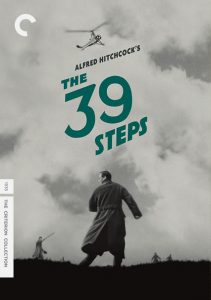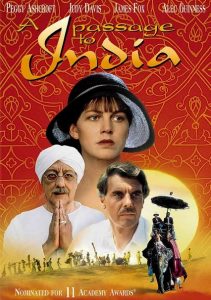The 39 Steps-1935
Director Alfred Hitchcock
Starring Robert Donat, Madeleine Carroll
Scott’s Review #1,212
Reviewed December 26, 2021
Grade: A-
Before Alfred Hitchcock conquered American audiences in the 1950s and 1960s, he made many British films, many of which are overlooked gems.
The 39 Steps (1935) is a film nestled among that category, providing thrilling escapism and a spy-tinged subject matter that has an everyman on the run.
The plot pattern is very familiar because Hitchcock used it later in his American films, such as The Man Who Knew Too Much (1956) and The Wrong Man (1956).
Rather than a carbon copy, The 39 Steps is a pure delight for any Hitchcock fan because the viewer can see facets and ideas the director would later bestow on his other films. There is enough originality to please anyone looking for a good thrill.
It is very loosely based on the 1915 adventure novel The Thirty-Nine Steps by John Buchan.
The story centers on Richard Hannay (Robert Donat), a Canadian civilian on holiday in London. He unintentionally becomes involved in preventing an organization of spies nicknamed “The 39 Steps” from stealing British military secrets.
After being mistakenly accused of the murder of a counter-espionage agent, Richard flees to Scotland. He becomes tangled up with an attractive woman named Pamela (Madeleine Carroll) while hoping to stop the spy ring and clear his name.
It’s a simple story that immediately compels viewers to root for Richard since we know he is innocent. Perhaps he can find romance along the way with Pamela and stop the bad guys. So, there is little ambiguity with how the story is supposed to wind up.
The fun is getting there.
Assuming this isn’t one’s first time watching a Hitchcock film, and it has been nearly a hundred years since The 39 Steps was made, I sincerely doubt it. There are oodles of sequences to enjoy. If one asks, “Does this scene seem familiar?” it is because many of them are.
The London Music Hall Theatre and the London Palladium brim with recognition, especially after a catchy tune that Richard cannot forget comes into play. It’s too easy not to think of Doris Day’s hit “Que Sera, Sera (Whatever Will Be, Will Be),” featured as a key element of The Man Who Knew Too Much or even the London setting itself.
To switch for a moment to another Hitchcock masterpiece, North by Northwest (1959), the frequent dashing across the lands by foot or locomotion comes into play in a big way in The 39 Steps.
I loathe making comparisons because The 39 Steps delivers some goods on its own merits. The action in the Scottish Highlands is fantastic and a treat for anyone who has visited the lovely and picturesque area.
Richard’s daring trip aboard the Flying Scotsman expresses that the train to Scotland is a compelling adventure.
The chemistry between Richard and Pamela is decent but not great. It’s not the focal point of the film, so I didn’t necessarily mind that. The clear intent was for her to first fear him but then have the characters fall in love. We never really get there, but it seems to be the purpose.
The main villain is Professor Jordan (Godfrey Tearle), who Richard tries to prevent from sending secrets out of the country.
Sure, there are better-quality Alfred Hitchcock films to bask in once he got his groove decades later, and one can assuredly boast that Vertigo (1958) and Psycho (1960) are superior films.
But The 39 Steps (1935) is a blueprint of the brilliance the director had in his head at this time, and it is a pure treat to witness.

